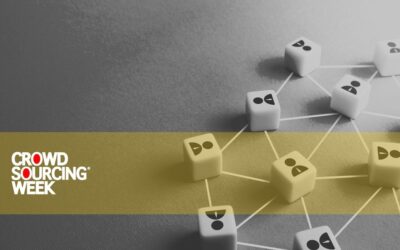Have you heard about Edelman Trust Barometer? This is a popular trust and credibility survey conducted annually by Edelman Intelligence, a global insight and analytics consultancy. The 2020 edition of the Barometer says that none of the four major societal institutions in the United States – government, business, NGOs, and media – is trusted.
Softening the blow is the fact that of the four institutions, business is perceived as the most competent. Still it lags NGOs in terms of ethical behavior. Both government and media are viewed as both incompetent and unethical.
“The most powerful currency in business”

Photo by Micheile Henderson on Unsplash
No matter what you may think about government, media, or NGOs, the fact that business is untrustworthy is extremely troubling. Often called “the most powerful currency in business,” trust is supposed to be at the core of every business operation.
Trust is vital in establishing the long-term relationship between businesses and their customers; no business can survive if it loses customer trust. But equally important is the trust between corporate leadership and the rank-and-file employees as the 2018 protests at Google over the Project Maven or more recent virtual walkout at Facebook have demonstrated.
Everyone would seem to agree that the best way to gain trust of other people is to communicate with them – and often! – face-to-face. This by itself represents a serious problem for businesses as their operations are increasingly moving online. The ongoing COVID-19 pandemic has grossly multiplied the problem by having disrupted the “normal” ways businesses communicate with customers – and employees, too.
How can one build and maintain trust with most business transactions taking place online and the employees working remotely? As surprisingly as it may sound, a few useful lessons can be learned from a popular open innovation tool: crowdsourcing.
In transparency we trust
Crowdsourcing is a practical realization of the concept of the “wisdom of crowds,” an idea that large groups of people can be smarter than a few individuals, no matter how brilliant.
In one of the many specific applications of crowdsourcing, an organization may ask a large crowd of people to solve a complex technical or business problem. Characteristically, the people composing the crowd are total “strangers” to this organization. Instead of working for it, they may be employed by other organizations (even competitors) or work in different industries or even countries.
 Take, for example, InnoCentive, one of the oldest and most reputable commercial crowdsourcing platforms. Over the 20 years of its existence, InnoCentive has amassed a crowd of 400,000+ so-called Solvers who live in 200 countries around the world. Regularly, these Solvers visit the InnoCentive website in search of a problem they believe they have a chance to solve and – if they solve it – to receive a prize award. Check out this webinar interview with their VP of Business Development.
Take, for example, InnoCentive, one of the oldest and most reputable commercial crowdsourcing platforms. Over the 20 years of its existence, InnoCentive has amassed a crowd of 400,000+ so-called Solvers who live in 200 countries around the world. Regularly, these Solvers visit the InnoCentive website in search of a problem they believe they have a chance to solve and – if they solve it – to receive a prize award. Check out this webinar interview with their VP of Business Development.
Remarkably, many of the Solvers have been with InnoCentive for years. They have never met with the InnoCentive staff; quite often, they do not know the identity of the organization posting the problem they are trying to solve; some of them have never won a single award. And yet, they keep returning to InnoCentive for another shot at success.
Why? Because they trust InnoCentive. InnoCentive, like other open innovation platforms, has created a robust and transparent process that allows people and organizations to work together even without knowing each other.
How does InnoCentive achieve that? First, InnoCentive only works with organizations that can be trusted. Solvers contribute their solutions without fear that their interests, including IP rights, will be neglected because InnoCentive will look after them.
Second, the objectives and the rules of engagement for every crowdsourcing project are outlined at the very beginning of the project. They cannot change, so that at every point, any Solver knows what she or he should accomplish to solve the problem and receive the prize.
Of course, given the huge volume of competitions that InnoCentive has run over the years, conflicts happen. But here is the third thing that InnoCentive does right: it never hides from the conflicts. It takes the problem at face value, does its best to resolve it, and – very importantly – openly communicates the results to all interested parties.
Three steps to follow
In summary, there are three things that anyone engaged in a crowdsourcing project, whether as a sponsor or a crowdsourcing platform, should keep in mind:
- Build and maintain a solid reputation of a trusted partner. Remember that reputation is a capital that takes years to create and only a few sloppy steps to destroy.
- Work only with the most trusted partners. Engaging shady ones may pay in the short term but will eventually ruin your own reputation.
- Establish a transparent process that will be easy to follow and monitor for everyone involved. Always be ready for an “audit” even if a real one may never happen.
Following these recommendations will help advance your business even if it has nothing to do with crowdsourcing per se.
Main image credit: Joshua Hoehne on Unsplash
UPDATE: since this article was written, UK idea management software and services firm Wazoku has announced the acquisition of U.S. open innovation firm InnoCentive’s assets, creating “the world’s most comprehensive and powerful innovation platform and community.”





0 Comments